
Bernhard Lill is a multimedia journalist and trainer. This article first appeared on Lill's Medium account on 4 January 2019. It has been edited and republished with the author's permission.
1. Story comes first, first, first
Everything starts with a story you want to tell. And if it is a good story, it must …
- be relevant to your readers, watchers, listeners, social community.
- be new.
- have a protagonist, a plot and a setting.
If you are working for TV or websites and mainly do video, then check out the Twitter accounts of Philip Bromwell and Eleanor Mannion (both RTÉ), Dougal Shaw (BBC), Leonor Suárez (documentary filmmaker) and Wytse Vellinga (a Dutch mojo specialist). They are great storytellers — and all work with smartphones. In the US, one of my favourite storytellers is Mike Castellucci. He created an award-winning show "Phoning It In", entirely shot with his iPhone and broadcast on TV.
Another good bet is to study what people post in social media — on YouTube, Instagram, Facebook, Snapchat, Twitter and TikTok. Find your favourite storytellers and analyse how they tell their stories and why they get so many likes.
So, first think of the story you want to tell: is it new? Is it relevant or useful to your followers or community? Then think of the tools you want to use to produce this story. Tools are important, but second to story. You want people to remember your story, not the brand of your smartphone.
2. Tools come second: the smartphone
There are people who swear that iPhones are the best tools for mobile journalists. iPhones are great tools, but they are not readily available in all parts of the world and they tend to be more expensive than Android devices.
So, it is not bad to spend a few moments pondering the question: what smartphone do I actually need?
You do not have to buy the latest flagship phone, be it an iPhone or an Android phone, to produce videos or other stories for TV or the web. On the other hand: do not buy too cheap, either; budget smartphones usually do not have cameras which are good enough for TV or large screens.
If you can still lay your hands on, for instance, a used iPhone 8 or a Samsung S8 and invest some more money into a new battery, then you are good to go. Almost. Because you will also need to know a bit more about apps and gadgets, such as external microphones, light, rigs and grips for your phone.
3. Apps
If you want to film videos with your smartphone, it is essential that you can lock focus and exposure in the camera app. Check the onboard camera of your phone for manual control. On iPhones, you can lock focus and exposure by tapping on the screen and holding the finger down until you see a square and a little sun icon. At the top you can also read the note "AE/AF Lock". If you want to adjust exposure, simply slide the sun icon up or down.
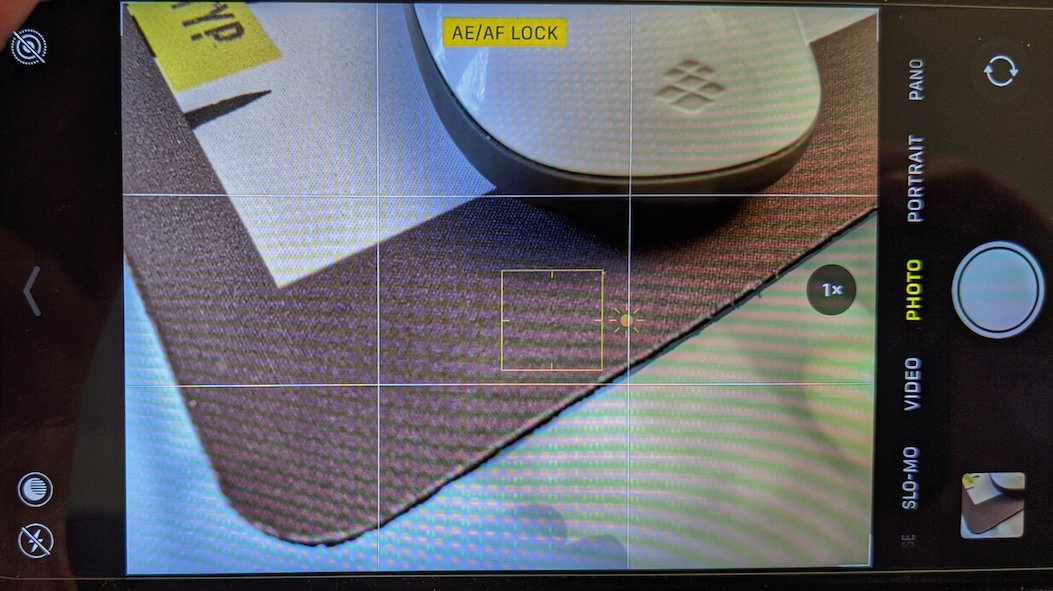
Bernhard Lill
With Android devices, it is a bit more difficult because there are thousands of different handsets around. This is how it looks like in the native camera app of the Google Pixel 3a.
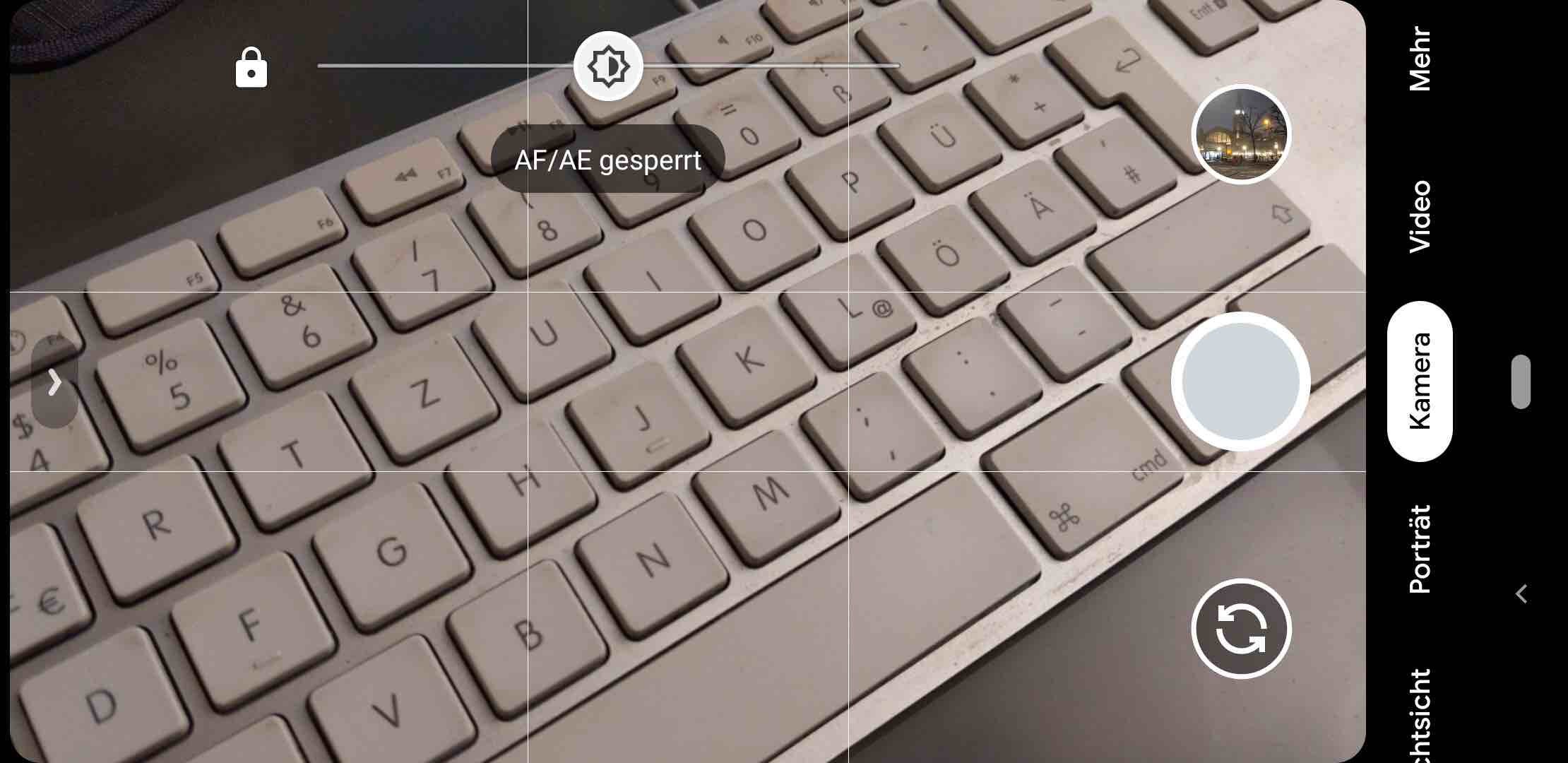
Bernhard Lill
On the Galaxy S8, you have to swipe to the right to use ProMode to lock focus and exposure (see image below: MF = Manual Focus). However, you cannot do this on the Android 9 operating system, because this version has done away with the ProMode.
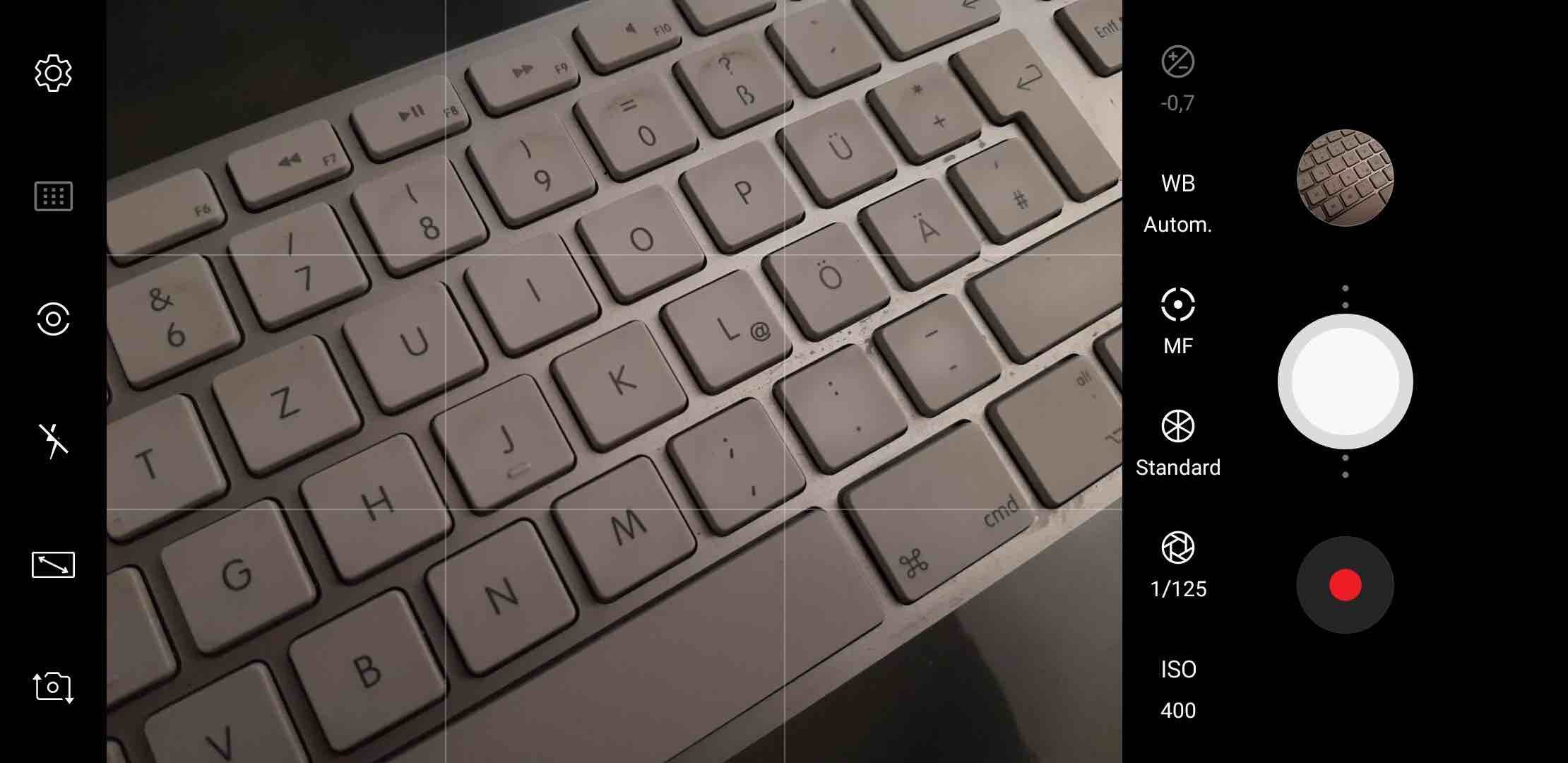
Bernhard Lill
If you are not satisfied with the amount of manual control the native camera app, there are third-party camera apps in the App Store or Google Play.
FiLMiC Pro sets the gold standard as far as video camera apps for iPhones are concerned. You can get it in the App Store for £14.99 (it is a one pay off, not a subscription). FiLMiC Pro is only for filming videos. If you want an app for both video and photos, try ProCamera (£7.99). In a lot of cases, however, the native camera app of your iPhone will do.
FiLMiC Pro also exists for Android phones, but is not compatible with all devices. Before you shell out £11.49, you should check if your phone works with FiLMiC Pro by downloading the FiLMiC Pro Evaluator app. Other options for Android devices are Open Camera, Footej Camera and Bacon Camera. Open Camera is for free, the other two offer free but limited versions.
For video editing, LumaFusion is a very powerful and professional app for iOS (iPhones and iPads). It sets you back £28.99, but is as good as you can get.
Kinemaster is also great and works on both platforms, iOS and Android. You can use it for free with a watermark. But if you want it without the watermark, you have to subscribe (£38.99 annually on iOS, £27.99 for Android). Vlogit is a free video editing app for iOS and Android; it is good for some basic editing.
For radio journalists going smartphone, consider the following apps:
- Voice Record Pro: free for iOS and Android, records audio and iOS version can also transcribe recorded interview
- Field Recorder: £4.39 for Android, good alternative to Voice Record Pro with a lot of professional settings
- Recorder: free for Android, Google's own recording app, few settings but includes English transcription
For basic audio editing you can also use Voice Record Pro or Ferrite (iOS, free/up to £34 in-app purchases) and Audio Evolution Mobile Studio (Android, £7.49) for more complex audio editing. One of the first English radio journalists who experimented with smartphones at work is Nick Garnett (BBC 5 Live). In the US, Neal Augenstein is a staunch smartphone advocate: he uses his iPhone as the main production device and works for the broadcaster WTOP.
For social media journalists, there are plenty of (free) apps to help you create snackable content for Instagram, Facebook, Twitter and other platforms: from teaser videos, graphic novels and photo text collages to interactive or animated graphics.
4. External microphones
The internal microphones of iPhones and a lot of Android phones are not bad, if you just want to record sound in a quiet environment and can get close to the speaker’s mouth.
As soon as you start filming in a big hall or on the street you will need an external mic. There are basically four different types: lavalier microphones (clip onto your interviewee’s lapel), shotgun microphones, handheld reporter microphones for interviews and wireless solutions.
I tested several microphones with the iPhone 11. Watch the following video and decide for yourself which mic sounds best to you. I usually work most with Røde’s Smartlav+ and the Boya BY-LM1. The latter is also a good lavalier mic — for less than half the price.
If you want to move more freely in front of your smartphone camera, a wireless solution may be best, like the Røde Wireless Go.
You can save money and transform your Røde Wireless Go into a handheld reporter microphone. All you need is a shampoo bottle and a windshield.
If you are at an event and want to interview many people, a shotgun mic like Røde’s VideoMicro may come in handy. The package includes a windshield, a so-called "dead cat". In the following video, you can hear the difference a windshield makes (first part of the video).
When you are using a shotgun microphone, make sure that your interviewees are less than one meter away from the microphone otherwise the sound will be less than ideal.
For a piece to camera, I usually choose a reporter or handheld microphone: when I use my iPhone, I take the iRig Mic HD2 (£137) which comes with a Lightning cable. When I’m on Android and the phone has a 3.5 mm headphone jack, I use the cheaper iRig Mic (£62).
One word of caution for users of Android devices: not all native camera apps recognise external microphones. In the past, I had difficulties with Huawei and Sony phones. If you think that the sound of your recording is not that great despite an external microphone, install Open Camera on your Android device. Go to the app’s settings → then Video Settings → Audio Source → and then choose 'External mic' (if present). This ensures you are recording with the external mic.
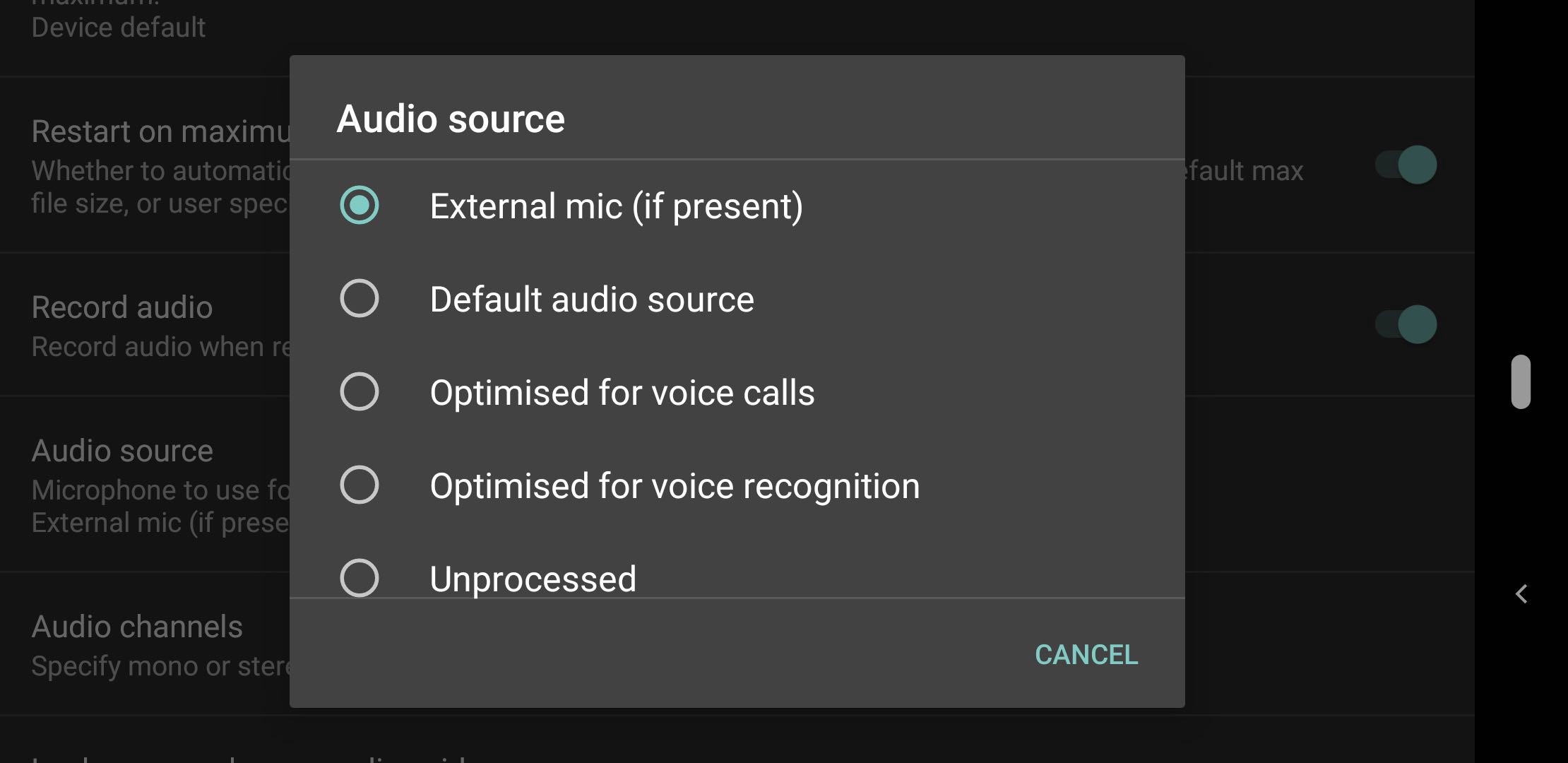
Bernhard Lill
5. Equipment
Of course, you can carry a large tripod to your next assignment and a gimbal and several battery packs and a rig for your smartphone, …and maybe a compact, little drone for cool aerial shots! But, do you really want to carry all that? As a mobile journalist, you want to travel with light luggage.
So besides your external microphone, you really need, for starters, only two other pieces of equipment in your mobile journalism bag: a grip or rig for your smartphone and a small tripod.
The Spanish company Shoulderpod has developed a modular grip system which holds your smartphone secure. You can compare their different rigs on their website or get a first idea here:
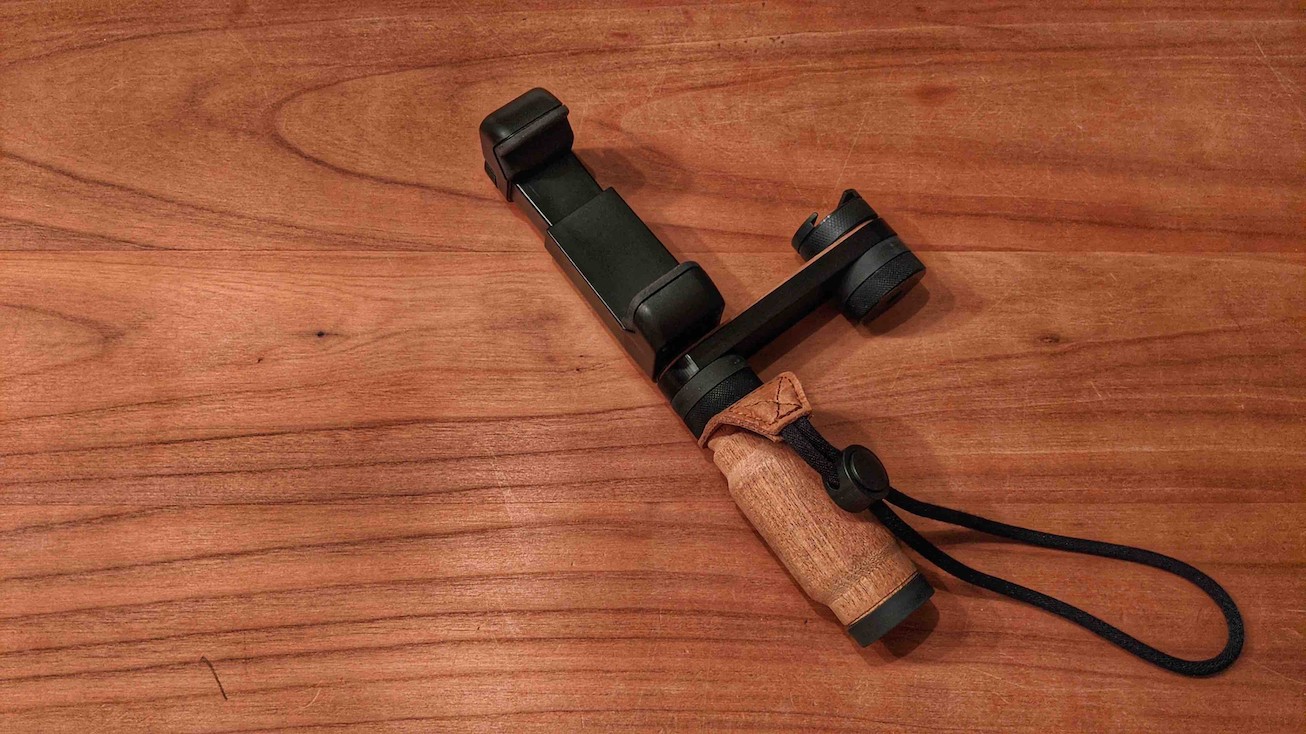
Bernhard Lill
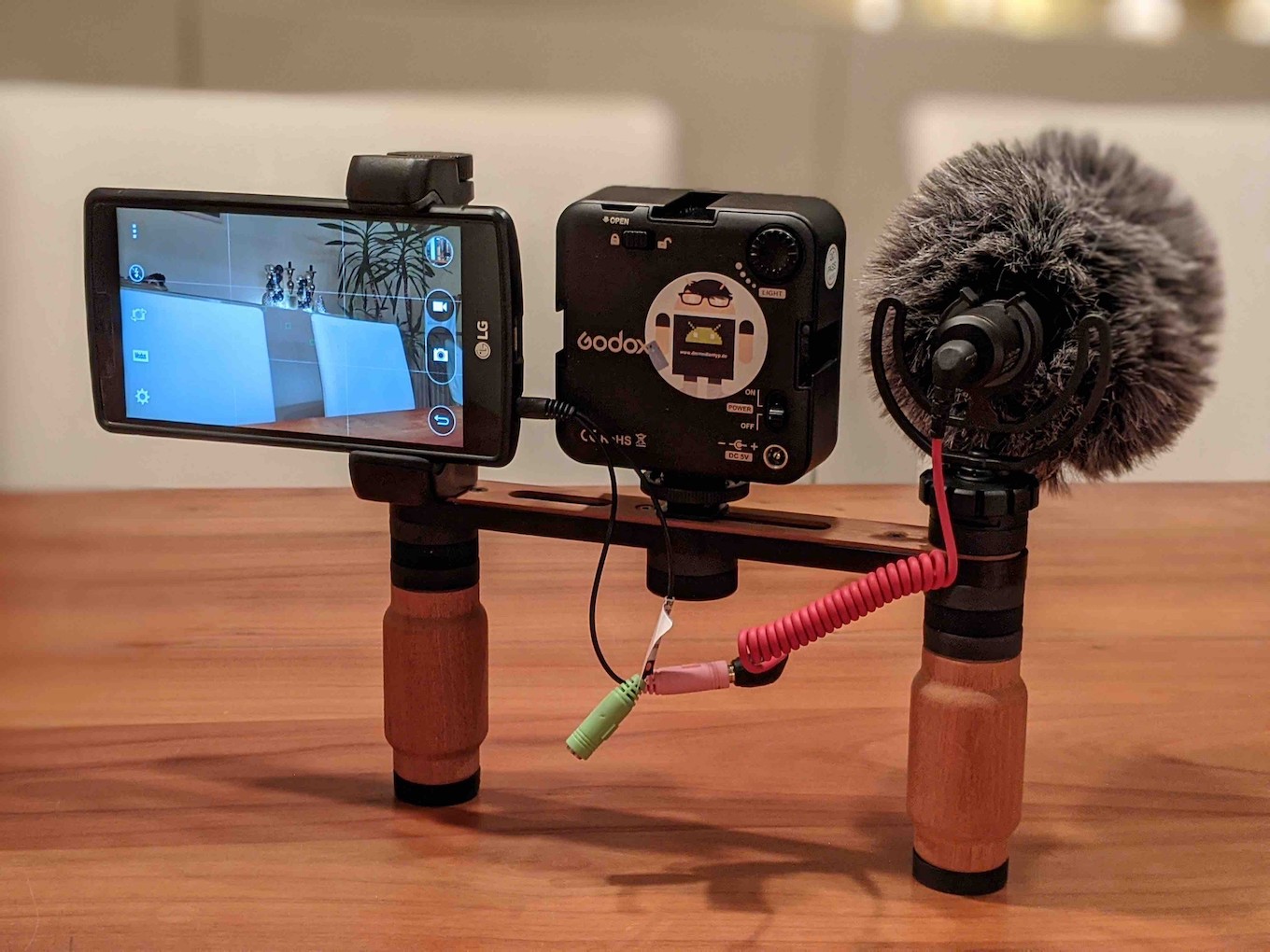
Bernhard Lill
Those grips are so good and sturdy that they have been widely copied by Chinese manufacturers.
My favourite tripods are produced by the company Joby, they are called Gorillapods. They come in different sizes and versions and are lightweight. You can wrap their legs around almost everything: lamp posts, street signs or tree branches. This means there is always find a way to attach your phone to something and then do your piece to camera.
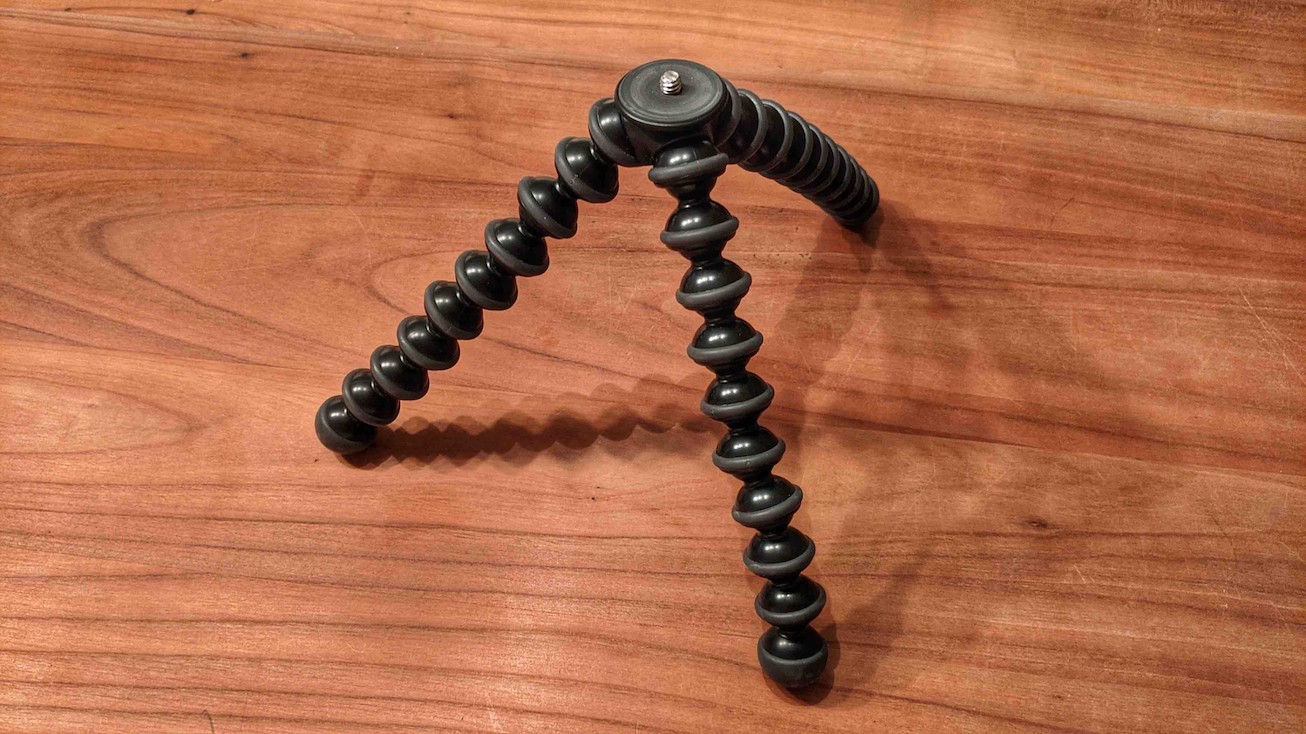
Bernhard Lill
Now the only thing you have to do now is to get started: grab your phone, get more familiar with the camera app, and test it out. Because this is what mobile journalism is also about: curiosity and practice, practice, practice.
And do not forget: you are not alone out there. There are quite a number of journalists around who work the mojo way. And they are usually very friendly. Two of my personal mojo heroes, besides those I already mentioned in this article, are Swiss TV reporter Marcel Anderwert and Umashankar Singh, a mobile journalist from India, who reports with his Samsung phone and selfie stick for the TV station NDTV — even from the UN in New York City.
Out you go now! Journalists should not sit in front of their desks all the time. Walk the streets, take photos with your phone, film videos. Good luck — and have fun.
Disclaimer: Bernhard Lill was not paid to mention or recommend any products in this article. All the products mentioned, he has bought himself and tested during his work as a mobile journalist and trainer.
You can find more mobile journalism tips from Bernhard Lill on his website.
Free daily newsletter
If you like our news and feature articles, you can sign up to receive our free daily (Mon-Fri) email newsletter (mobile friendly).
Related articles
- Tool for journalists: Story SpinnerAI, for generating story angles based on user needs
- Why TikTok star Sophia Smith Galer created an AI tool to help journalists make viral videos
- New project InOldNews wants to improve representation in video journalism
- How AI can help journalists track MPs financial interests
- 38 mojo apps from BBC trainer Marc Blank-Settle









